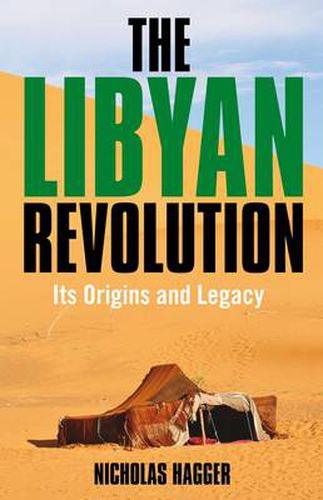Readings Newsletter
Become a Readings Member to make your shopping experience even easier.
Sign in or sign up for free!
You’re not far away from qualifying for FREE standard shipping within Australia
You’ve qualified for FREE standard shipping within Australia
The cart is loading…






Forty years after Col. Gaddafi’s Libyan Revolution cut Libya off from the outside world, scrubbed out Western lettering and turned the country against the US, Libya has changed its outlook, renounced nuclear weapons and reopened itself to Western cruise ships and tourists. Gaddafi is still in power. Nicholas Hagger, an eyewitness of the events of the 1969 Revolution and plans for a rival coup, predicted at the time that Gaddafi would still be in power 40 years later. He narrates the story of the first year of the Revolution, identifies its aims and considers if they have been achieved. Before the Revolution he wrote a weekly two-page feature in a Libyan English-language newspaper under the byline the Barbary Gipsy. His timeless and poetic views of Libya’s sea, sand and Roman ruins in these articles are reprinted in an Appendix. This is a memoir and a portrait of western Libya. The places visited have changed little as a return visit in 2001 established. This book is required reading for all visitors to Libya today.
$9.00 standard shipping within Australia
FREE standard shipping within Australia for orders over $100.00
Express & International shipping calculated at checkout
Forty years after Col. Gaddafi’s Libyan Revolution cut Libya off from the outside world, scrubbed out Western lettering and turned the country against the US, Libya has changed its outlook, renounced nuclear weapons and reopened itself to Western cruise ships and tourists. Gaddafi is still in power. Nicholas Hagger, an eyewitness of the events of the 1969 Revolution and plans for a rival coup, predicted at the time that Gaddafi would still be in power 40 years later. He narrates the story of the first year of the Revolution, identifies its aims and considers if they have been achieved. Before the Revolution he wrote a weekly two-page feature in a Libyan English-language newspaper under the byline the Barbary Gipsy. His timeless and poetic views of Libya’s sea, sand and Roman ruins in these articles are reprinted in an Appendix. This is a memoir and a portrait of western Libya. The places visited have changed little as a return visit in 2001 established. This book is required reading for all visitors to Libya today.